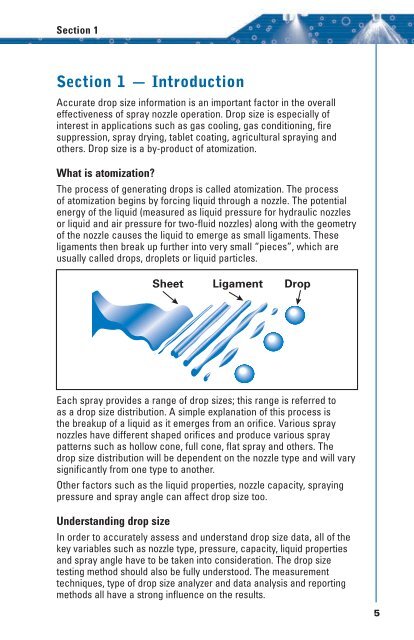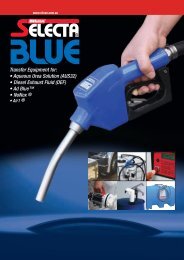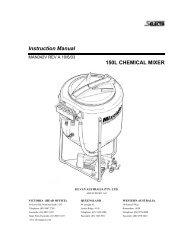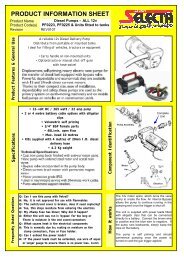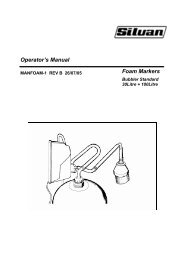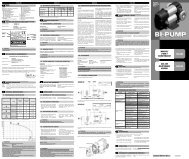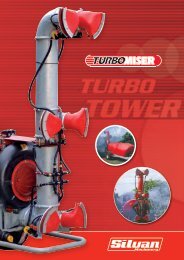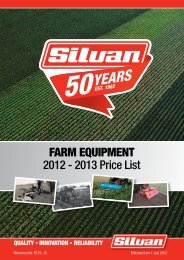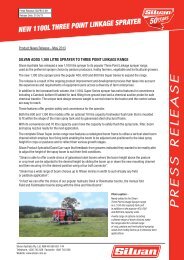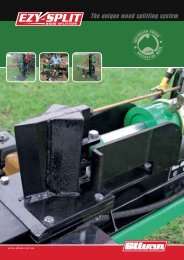Spray Technology Reference Guide: Understanding Drop ... - TeeJet
Spray Technology Reference Guide: Understanding Drop ... - TeeJet
Spray Technology Reference Guide: Understanding Drop ... - TeeJet
You also want an ePaper? Increase the reach of your titles
YUMPU automatically turns print PDFs into web optimized ePapers that Google loves.
Section 1<br />
Section 1 — Introduction<br />
Accurate drop size information is an important factor in the overall<br />
effectiveness of spray nozzle operation. <strong>Drop</strong> size is especially of<br />
interest in applications such as gas cooling, gas conditioning, fire<br />
suppression, spray drying, tablet coating, agricultural spraying and<br />
others. <strong>Drop</strong> size is a by-product of atomization.<br />
What is atomization?<br />
The process of generating drops is called atomization. The process<br />
of atomization begins by forcing liquid through a nozzle. The potential<br />
energy of the liquid (measured as liquid pressure for hydraulic nozzles<br />
or liquid and air pressure for two-fluid nozzles) along with the geometry<br />
of the nozzle causes the liquid to emerge as small ligaments. These<br />
ligaments then break up further into very small “pieces”, which are<br />
usually called drops, droplets or liquid particles.<br />
<br />
<br />
<br />
Each spray provides a range of drop sizes; this range is referred to<br />
as a drop size distribution. A simple explanation of this process is<br />
the breakup of a liquid as it emerges from an orifice. Various spray<br />
nozzles have different shaped orifices and produce various spray<br />
patterns such as hollow cone, full cone, flat spray and others. The<br />
drop size distribution will be dependent on the nozzle type and will vary<br />
significantly from one type to another.<br />
Other factors such as the liquid properties, nozzle capacity, spraying<br />
pressure and spray angle can affect drop size too.<br />
<strong>Understanding</strong> drop size<br />
In order to accurately assess and understand drop size data, all of the<br />
key variables such as nozzle type, pressure, capacity, liquid properties<br />
and spray angle have to be taken into consideration. The drop size<br />
testing method should also be fully understood. The measurement<br />
techniques, type of drop size analyzer and data analysis and reporting<br />
methods all have a strong influence on the results.


